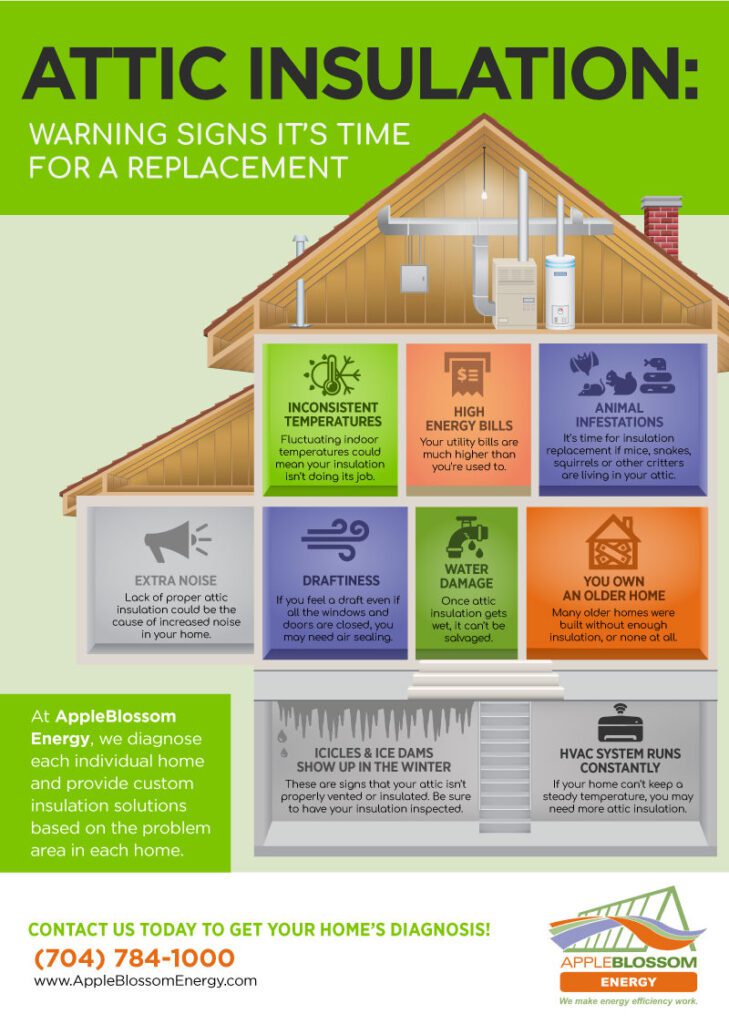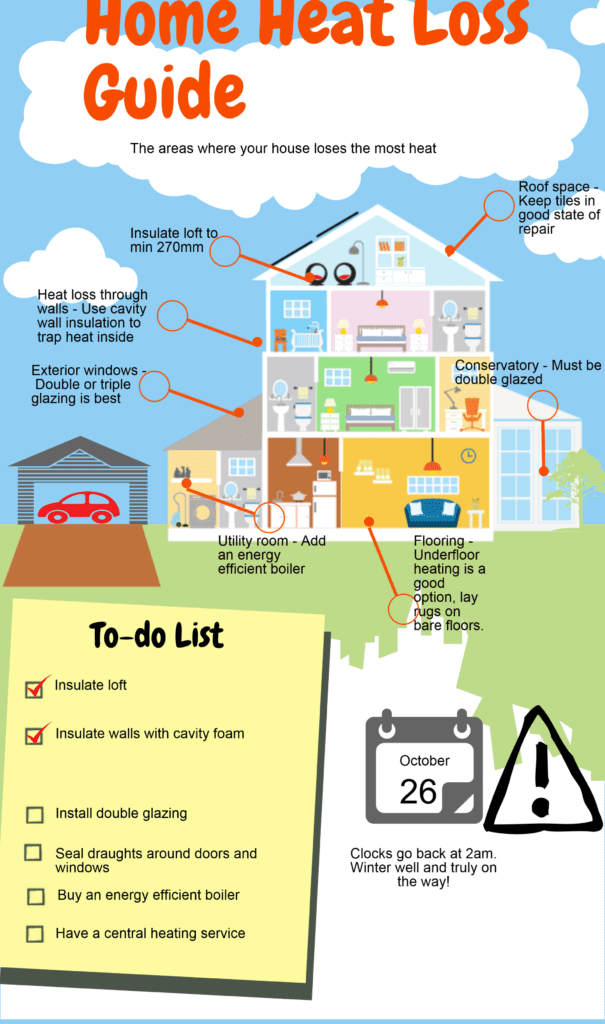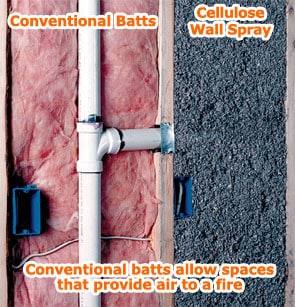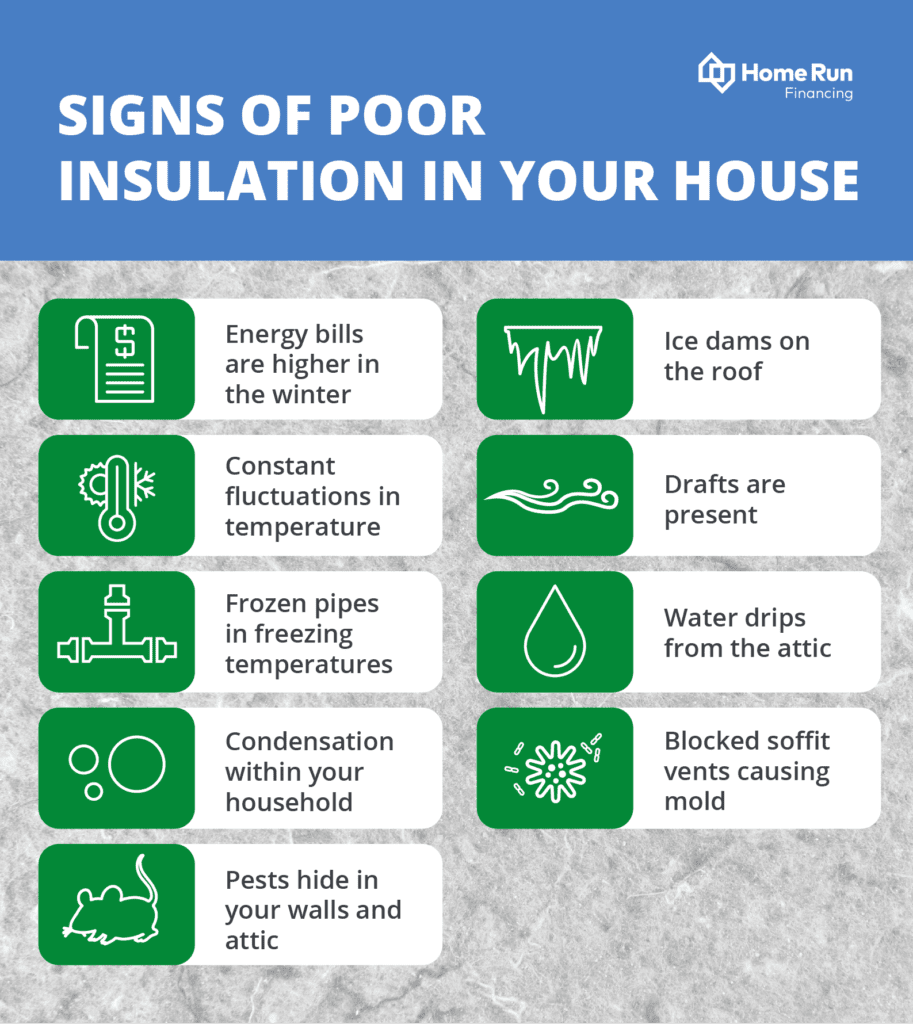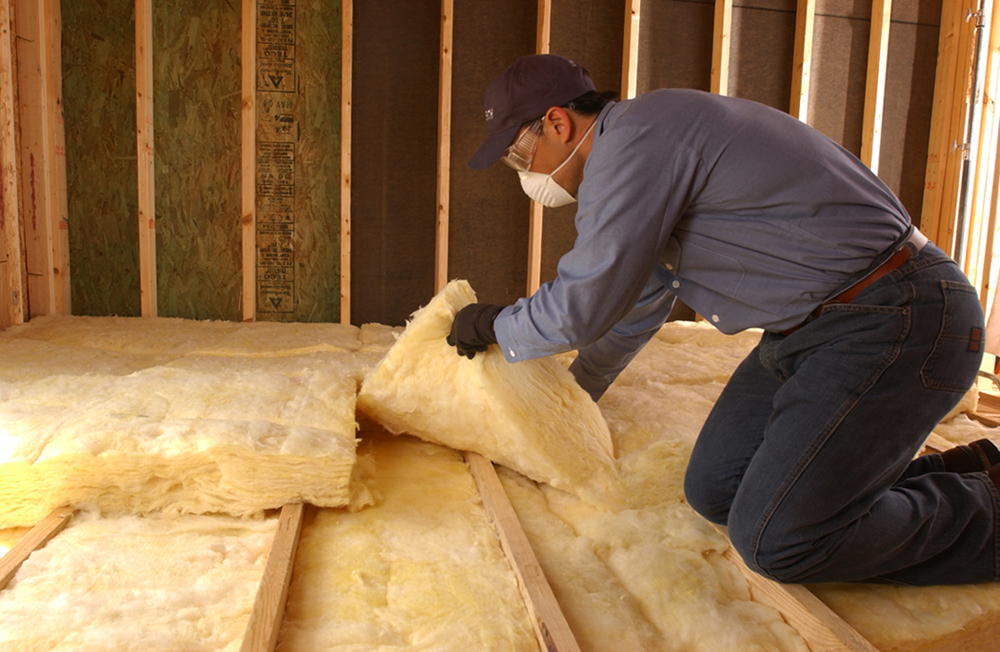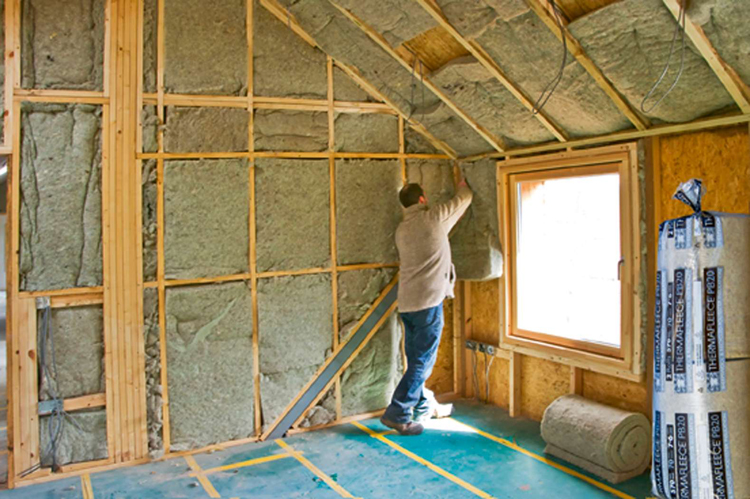Are you unsure if your house is in need of new insulation? It can be a common concern for homeowners, especially as the seasons change and energy bills start to climb. In this article, we will explore some telltale signs that indicate it may be time to consider updating your insulation. By keeping an eye out for these indicators, you can ensure that your home remains comfortable and energy-efficient all year round. So, let’s dive right in and discover how to determine if your house needs new insulation!
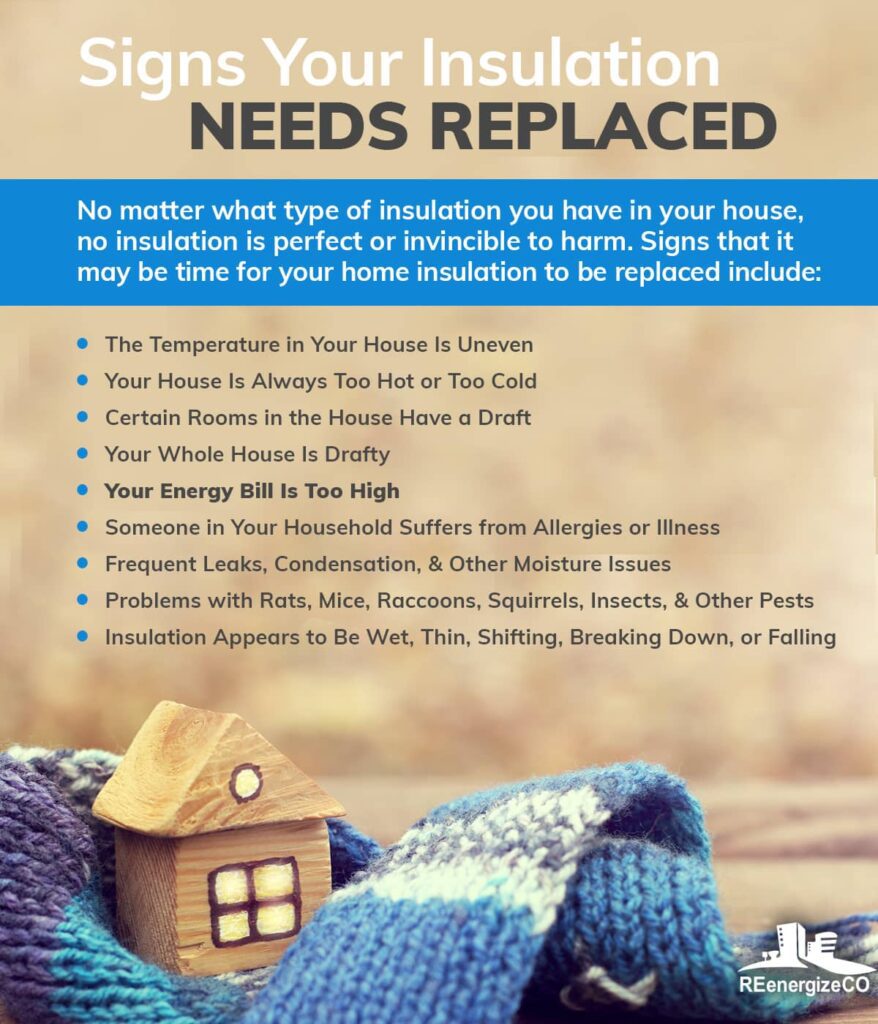

Signs that indicate the need for new insulation
If you’re wondering whether your house needs new insulation, there are several signs you can look out for. These indicators can help you determine if your insulation is no longer functioning effectively and if it’s time for an upgrade.
Unusual temperature changes
Do you feel extreme temperature changes in your home? If you find it difficult to keep your space cool in the summer and warm in the winter, it could be a sign that your insulation is not providing sufficient thermal resistance.
High energy bills
Are your energy bills skyrocketing despite regular use? Insufficient insulation can lead to energy inefficiency, as it allows heat to escape in the winter and enter in the summer. This results in your heating and cooling systems working harder to maintain your desired temperature, resulting in higher energy consumption.
Drafty or uncomfortable rooms
If certain rooms in your home feel drafty or uncomfortable, it could be a clear indication of inadequate insulation. Insulation helps maintain a consistent temperature throughout your space, so if you notice uncomfortable drafts or inconsistent heating and cooling, it may be time to consider new insulation.
Uneven temperature distribution
Do you notice significant temperature variations in different areas of your home? Uneven temperature distribution can occur when insulation is insufficient or damaged. Rooms with inadequate insulation may be noticeably warmer or cooler than the rest of your house.
Mold or mildew growth
If you discover mold or mildew growth in your home, it could be a sign of moisture infiltration due to poor insulation. Inadequate insulation can allow moisture to seep through, leading to dampness and the perfect conditions for mold and mildew to thrive.
Ice dams on the roof
Ice dams are the build-up of ice along the edges of your roof. This phenomenon usually occurs when warm indoor air escapes through the attic due to insufficient insulation. As the warm air rises and meets the cold roof, it causes snow to melt, leading to ice formation. Ice dams can damage your roof and gutters, so if you notice them, it’s important to address the insulation issue.
Increased noise
Insulation not only helps regulate temperature but also acts as a sound barrier. If you notice an increase in noise from outside or between rooms, it could be a sign that your insulation is inadequate. Upgrading your insulation can help reduce unwanted noise and improve the overall comfort of your home.
Pest infestation
Poor insulation can create openings in your home that pests, such as rodents and insects, can exploit to gain entry. If you’re dealing with a pest infestation or notice signs of their presence, it’s crucial to assess your insulation and seal any gaps to prevent further infiltration.
Visible damage to insulation
Inspect your insulation for any visible signs of damage, such as ripped or torn sections. Physical damage to insulation can compromise its effectiveness and lead to energy loss. If you spot any visible damage, it’s a good indicator that your insulation may need replacement.
Old or insufficient insulation
If your home is older, it’s likely that the insulation may be outdated and not up to current standards. Insulation technology has significantly advanced in recent years, offering greater energy efficiency and improved performance. If your insulation is outdated or inadequate for your climate, it may be time for an upgrade.
Methods to determine if your house needs new insulation
Now that you’re aware of the signs that indicate the need for new insulation, it’s important to know how to assess your home’s insulation status. There are several methods you can use to determine if your house requires new insulation.
Visual inspection
Performing a visual inspection is a simple and effective way to assess your insulation. Take a walk around your home, inspecting areas such as the attic, walls, and crawlspaces. Look for any damaged or missing insulation, moisture or water stains, discoloration or aging of the current insulation, evidence of pest infestation, gaps, and cracks in the insulation, as well as visible air leaks. These visual indicators can help you identify areas that need attention.
Utilizing thermal imaging technology
Thermal imaging technology is a more advanced method of assessing insulation effectiveness. By using an infrared camera, you can detect temperature differences in your home’s walls, ceilings, and floors. Thermal imaging can identify insulation gaps and voids that are not visible to the naked eye. This technology highlights areas of insufficient insulation, enabling you to target those specific areas for improvement.
Energy audit
An energy audit involves a comprehensive analysis of your home’s energy efficiency. During an energy audit, a professional will assess various aspects of your home, including insulation, heating and cooling systems, windows, and doors. Through this assessment, an energy auditor can identify any insulation issues that may be contributing to energy inefficiency. They can provide you with an estimation of potential energy savings and offer recommendations for insulation improvements.
Consultation with an insulation professional
Seeking the advice of an insulation professional is another effective way to determine if your house needs new insulation. These experts have the knowledge and experience to evaluate the status of your insulation and provide tailored recommendations. They will conduct a thorough inspection to assess your current insulation, introduce you to different insulation options, offer a cost estimation for insulation upgrades, and provide guidance on suitable insulation materials based on your specific needs and budget.


Visual inspection indicators
When performing a visual inspection of your insulation, it’s essential to know what indicators to look for. These visual clues can help you identify areas of concern and determine if your insulation requires replacement.
Damaged or missing insulation
Inspect your insulation for any visible signs of damage, such as tears, holes, or compression. Damaged insulation is less effective at providing thermal resistance, which can lead to energy loss and decreased comfort in your home. Additionally, check for any areas where insulation may be missing altogether, as these gaps can significantly impact the insulation performance.
Moisture or water stains
Moisture or water stains on or around your insulation can indicate a moisture problem that may be compromising its effectiveness. Look for any discolored patches or signs of water damage, as these are clear indicators of insulation issues that need to be addressed.
Discoloration or aging of current insulation
Over time, insulation can show signs of wear and aging. Look for any discoloration, fading, or brittleness in your current insulation. This can be an indication that the insulation has deteriorated and is no longer functioning optimally.
Pest infestation evidence
Inspect your insulation for any signs of pest infestation, such as rodent droppings, nesting materials, or chewed insulation. Pests can damage your insulation by creating holes or tunnels, compromising its thermal performance. If you discover evidence of pests, it’s important to address the infestation and replace the affected insulation.
Gaps and cracks in insulation
Check for any visible gaps or cracks in your insulation. These openings can allow air to leak in and out of your home, reducing energy efficiency and compromising the comfort of your space. Sealing these gaps is crucial for improving insulation performance.
Visible air leaks
Perform a visual inspection for any visible air leaks around windows, doors, electrical outlets, and other potential entry points. These leaks can contribute to significant energy loss and should be sealed to enhance insulation effectiveness.
Using thermal imaging technology
Thermal imaging technology provides a more detailed and accurate assessment of your insulation’s performance. By utilizing an infrared camera, you can identify areas with temperature differences, insulation gaps, and voids that may not be visible through a visual inspection alone.
Detection of temperature differences
Thermal imaging technology can reveal temperature differences in your home’s walls, ceilings, and floors. Hot or cold spots can indicate areas where insulation is lacking or not functioning properly. Identifying these temperature differences can help you pinpoint problem areas that require attention.
Identification of insulation gaps and voids
Through thermal imaging, you can identify insulation gaps and voids that may not be visible with the naked eye. These gaps can occur during the installation process or due to settling over time. Identifying these gaps allows you to focus on specific areas for insulation improvement and ensure your home is adequately insulated.
Highlighting areas of insufficient insulation
Thermal imaging technology can highlight areas with insufficient insulation. This can include thin or inconsistent areas of insulation that do not provide adequate thermal resistance. By identifying these areas, you can prioritize insulation upgrades to improve the overall energy efficiency of your home.
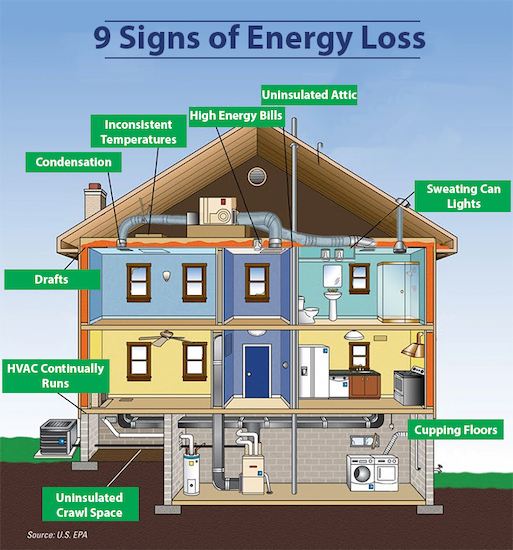

Benefits of energy audit
An energy audit is a comprehensive analysis of your home’s energy efficiency, including its insulation performance. This assessment offers numerous benefits in determining the need for new insulation.
Comprehensive analysis of energy efficiency
During an energy audit, a professional will evaluate various factors impacting your home’s energy efficiency, including insulation performance, HVAC systems, windows, and doors. This comprehensive analysis provides a holistic view of your energy consumption and helps pinpoint areas for improvement.
Identification of insulation issues
An energy audit can identify specific insulation issues that may be affecting your home’s energy efficiency. Insulation problems, such as inadequate or damaged insulation, can contribute to energy loss and decreased comfort. By identifying these issues, you can take appropriate measures to address them and enhance your insulation’s effectiveness.
Estimation of potential energy savings
One of the key benefits of an energy audit is the estimation of potential energy savings. A trained professional can assess your current insulation’s performance and provide recommendations for improvements. By implementing these recommendations, you can potentially reduce your energy consumption and save on utility costs.
Recommendations for insulation improvements
During an energy audit, the auditor will provide you with recommendations for insulation improvements tailored to your home’s specific needs. These recommendations may include replacing outdated insulation, sealing air leaks, or adding insulation to areas with insufficient coverage. By following these recommendations, you can maximize your insulation’s efficiency and ensure optimal energy performance.
Consultation with an insulation professional
When considering new insulation for your home, it’s beneficial to consult with an insulation professional. These experts can provide valuable insights and guidance throughout the insulation upgrade process.
Expert evaluation of insulation status
An insulation professional will conduct a thorough evaluation of your current insulation and assess its performance. They have the knowledge and experience to identify any shortcomings or deficiencies in your insulation, helping you make informed decisions about the need for replacement.
Introduction to insulation options
Insulation professionals can introduce you to the various insulation options available. They can explain the advantages and disadvantages of different materials, such as fiberglass, cellulose, spray foam, mineral wool, natural fiber, and reflective insulation. By understanding the characteristics of each insulation type, you can choose the one that best suits your needs and preferences.
Cost estimation for insulation upgrades
Once an insulation professional has evaluated your home’s insulation needs, they can provide you with a cost estimation for the required upgrades. This estimate will help you budget accordingly and plan for the necessary insulation improvements. Additionally, they can advise you on insulation options that offer the best value for your investment.
Guidance on suitable insulation materials
Choosing the right insulation material is crucial for achieving optimal energy efficiency and comfort. Insulation professionals can guide you on suitable insulation materials based on factors such as climate and weather conditions, R-value requirements, home size and layout, and budget constraints. Their expertise ensures that you make informed decisions and select the insulation that will best meet your needs.


Factors to consider when deciding on new insulation
When deciding on new insulation for your home, several factors should be taken into consideration. These factors will help you make an informed decision and select the insulation that suits your specific needs and circumstances.
Climate and weather conditions
The climate and weather conditions in your region play a significant role in determining the type of insulation that will be most effective. For example, in colder climates, insulation with a higher R-value may be required to provide adequate thermal resistance. On the other hand, in warmer climates, insulation that offers better heat flow resistance may be more suitable. Consider your local climate and the specific insulation needs it entails.
R-value requirements
The R-value is a measure of an insulation material’s thermal resistance. It indicates how well the insulation can resist heat flow. Different areas of your home may have different R-value requirements due to varying heat transfer dynamics. Understanding the recommended R-values for different areas, such as the attic, walls, and floors, will help you choose the insulation material that meets these requirements.
Home size and layout
The size and layout of your home will impact the amount of insulation material required. Larger homes or homes with complex layouts may require more insulation to ensure comprehensive coverage. Consider the size and layout of your home when determining the quantity of insulation needed.
Budget constraints
Your budget is an important factor when deciding on new insulation. Different insulation materials vary in cost, and the amount required for your home can influence the overall expense. Consider your budget constraints and explore the insulation options that offer the best balance of cost-effectiveness and performance.
Environmental concerns
If environmental sustainability is a priority for you, consider insulation materials with eco-friendly characteristics. Some insulation materials are made from recycled or renewable materials and have minimal environmental impact. If sustainability is important to you, explore options such as natural fiber insulation or cellulose insulation.
Installation process and timeframe
Consider the installation process and timeframe associated with different insulation materials. Some materials, such as spray foam insulation, require professional installation due to their specialized application techniques. Others, like fiberglass or cellulose insulation, can be installed by homeowners with proper guidance. Understanding the installation process and timeframe will help you plan accordingly and ensure a smooth insulation upgrade.
Maintenance requirements
Different insulation materials have varying maintenance requirements. Some materials may require periodic inspections and maintenance to ensure their continued effectiveness. Consider the long-term maintenance needs of different insulation options and choose the material that aligns with your maintenance capabilities and preferences.
Types of insulation materials
When considering new insulation for your home, it’s important to explore the different types of insulation materials available. Each material offers unique characteristics and benefits that can influence its suitability for your specific needs.
Fiberglass insulation
Fiberglass insulation is one of the most commonly used insulation materials. It consists of fine glass fibers that trap air, providing effective thermal resistance. Fiberglass insulation is available in various forms such as batts, rolls, or blown-in insulation. It offers excellent fire resistance, sound absorption properties, and is relatively affordable.
Cellulose insulation
Cellulose insulation is made from recycled paper fibers treated with fire retardants. It is an eco-friendly option that offers excellent thermal and sound insulation properties. Cellulose insulation can be blown into walls, attics, and other areas using specialized equipment. It provides effective coverage and is relatively affordable.
Spray foam insulation
Spray foam insulation is a versatile material that expands when sprayed, filling cavities and gaps. It creates a seamless and airtight barrier, offering outstanding thermal resistance. Spray foam insulation is ideal for hard-to-reach areas and can enhance the structural integrity of your home. This type of insulation requires professional installation and can be more expensive than other options.
Mineral wool insulation
Mineral wool insulation is made from volcanic rock or slag, which is melted and spun into fibers. It offers excellent fire resistance, soundproofing capabilities, and thermal insulation properties. Mineral wool insulation is available as batts or loose-fill insulation and is a durable and long-lasting option.
Natural fiber insulation
Natural fiber insulation is made from renewable materials such as cotton, sheep’s wool, or hemp. It offers good thermal and sound insulation properties, as well as being environmentally sustainable. Natural fiber insulation can be an effective choice for those seeking eco-friendly options, but it may be more expensive than traditional insulation materials.
Reflective insulation
Reflective insulation consists of a reflective material, such as aluminum foil, which reflects radiant heat. It is often used in combination with other insulation materials to enhance energy efficiency. Reflective insulation helps to reduce heat transfer and is particularly effective in hot climates. It is relatively easy to install and provides an additional layer of insulation.
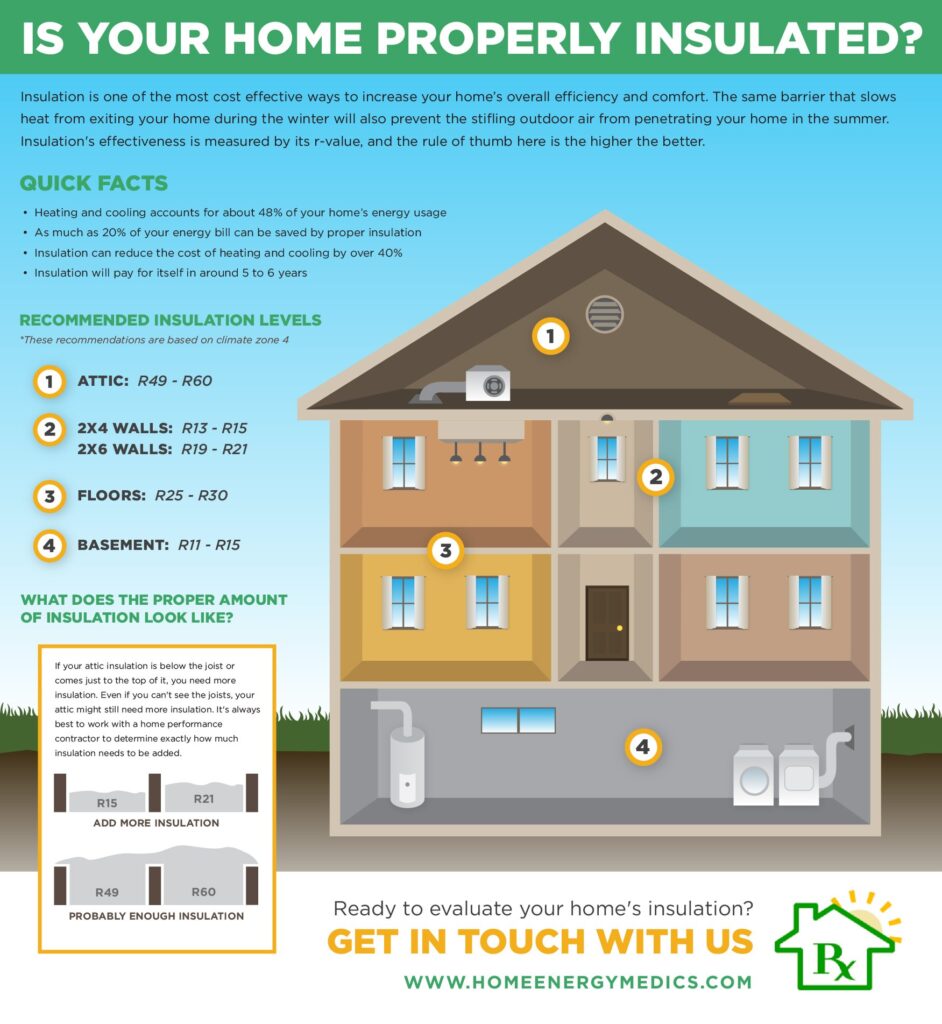

Steps involved in the insulation replacement process
When replacing insulation in your home, several steps are involved to ensure a successful and effective installation. Understanding these steps will help you prepare for the process and ensure that your new insulation performs optimally.
Evaluation and removal of old insulation
The first step is to evaluate your existing insulation and determine if it needs to be removed. In some cases, old insulation can be left in place if it is still in good condition. However, if the insulation is damaged, deteriorated, or does not meet current standards, it may need to be removed before installing new insulation. Professional insulation contractors can safely and efficiently remove old insulation.
Preparation of the work area
Preparing the work area is crucial for a smooth insulation replacement process. This involves clearing out any belongings or obstacles that may hinder access to the areas requiring new insulation. Additionally, ensuring that the work area is clean and free from debris will help facilitate the installation process.
Installation of new insulation
Once the work area is prepared, the installation of new insulation can begin. The specific method of installation will depend on the type of insulation material chosen. It could involve placing batts or rolls of insulation in walls, attics, or floors, blowing loose-fill insulation into cavities, or using spray foam insulation to fill gaps and voids. Professional insulation contractors have the expertise to ensure proper installation.
Sealing air leaks and gaps
During the insulation replacement process, it’s important to address any air leaks or gaps that may compromise the effectiveness of the new insulation. These leaks can allow air to infiltrate or escape, reducing energy efficiency. Sealing these leaks with caulk, weatherstripping, or other appropriate materials will help maximize the performance of your new insulation.
Testing and inspection of the new insulation
After the new insulation is installed and air leaks are sealed, it’s vital to test and inspect the insulation for quality assurance. Professional insulation contractors will conduct tests, such as thermal scans or blower door tests, to assess the insulation’s performance. This ensures that the insulation has been properly installed and will effectively meet the desired thermal resistance.
Cleanup and restoration of the work area
Once the installation, sealing, and testing are complete, the work area should be cleaned up and restored to its original condition. Proper cleanup will involve removing any debris or remnants from the insulation replacement process. It’s important to leave the area clean and tidy for a seamless transition back to normal use.
Importance of professional installation
While some homeowners may choose to install insulation themselves, there are several benefits to opting for professional installation.
Ensures proper insulation installation
Insulation professionals have the necessary knowledge and expertise to ensure proper insulation installation. They have a deep understanding of the different insulation materials and their application techniques. Professional installation minimizes the risk of mistakes or improper installation, maximizing the effectiveness and performance of your insulation.
Reduces the risk of future issues
Professional installation reduces the risk of future issues related to insulation installation. Improperly installed insulation can lead to problems such as air leaks, moisture infiltration, or decreased energy efficiency. By entrusting the installation to professionals, you can mitigate these risks and enjoy the long-term benefits of properly installed insulation.
Maximizes energy efficiency
Proper installation is essential for maximizing the energy efficiency of your home. Professional insulation contractors know how to effectively seal air leaks, ensure full coverage, and optimize the thermal resistance of the insulation. This results in a more energy-efficient home, reduced utility bills, and increased comfort.
Adheres to building codes and regulations
Insulation installation must meet building codes and regulations to ensure safety and compliance. Professional insulation contractors are familiar with these codes and regulations and ensure that the installation adheres to them. This provides peace of mind, knowing that your insulation has been installed correctly and meets all necessary requirements.
Provides warranty and guarantees
Professional insulation contractors often offer warranties and guarantees on their workmanship. This means that if any issues arise with the insulation installation, the contractor will address them and provide necessary repairs or replacements. Having this warranty and guarantee provides an added layer of protection and assurance for your investment in insulation.
In conclusion, knowing whether your house needs new insulation is crucial for maintaining energy efficiency, comfort, and overall home performance. By paying attention to signs such as unusual temperature changes, high energy bills, drafty rooms, and visible damage to insulation, you can identify the need for insulation replacement. Methods such as visual inspection, thermal imaging technology, energy audits, and consultation with insulation professionals help determine the extent of insulation issues and guide you in selecting the most suitable insulation materials. Factors such as climate, R-value requirements, home size, and budget should be considered when making insulation decisions. Types of insulation materials include fiberglass, cellulose, spray foam, mineral wool, natural fiber, and reflective insulation, each with its own advantages and considerations. The insulation replacement process involves evaluating and removing old insulation, preparing the work area, installing new insulation, sealing air leaks and gaps, testing and inspecting the new insulation, and cleaning up the work area. Professional installation is important to ensure proper insulation installation, reduce future issues, maximize energy efficiency, comply with building codes, and provide warranties and guarantees. By understanding the signs, methods, factors, and process of insulation replacement, you can make informed decisions to enhance the comfort, efficiency, and value of your home.

